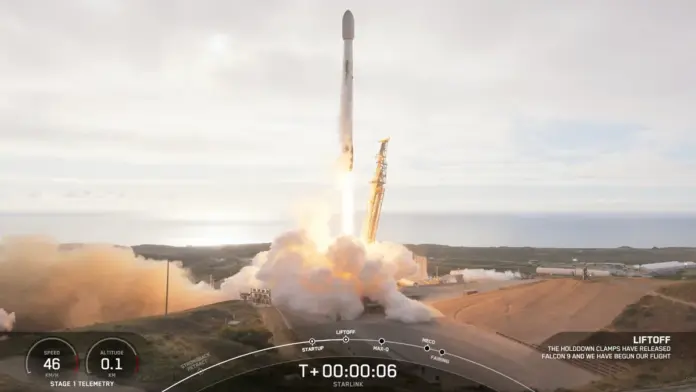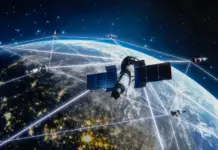Sunday morning in California was marked with another spectacle as SpaceX successfully launched another 26 of its Starlink satellites into low orbit. The Falcon 9 launch took place from the Space Launch Complex 4 East (SLC-4E) at the Vandenberg Space Force Base on the 8th of June at 7:20 AM. With this launch, there are now 6,715 total operational Starlink satellites in the skies. If you are someone who wants to know more about the Starlink satellite launch on Sunday, the following article is for you. It brings you all the information you need to know about the launch.
Starlink Satellites Launched In Foggy Weather
The weather during the launch in California was rather foggy. However, the launch of the 26 satellites, which was scheduled for Sunday, June 8, proceeded smoothly. The launch, as always, was live-streamed through the company’s social media platform on X. The viewers can see the Falcon 9 rocket taking off from the Vandenberg Space Force Base despite the foggy conditions. According to the reports, the fog did not really affect the launch of the satellites, and no particular challenges were faced because of the weather conditions.
Also read: What Is the Dragon Spacecraft by SpaceX? Elon Musk’s Game-Changing Spacecraft
Seventh Flight Of The First Stage Booster
The launch that took place from the Vandenberg Space Force Base on Sunday was the seventh flight of SpaceX’s first-stage booster. According to the reports, the booster has also been a part of various other missions like NROL-126, Transporter-12, SPHEREx, NROL-57, and two prior Starlink deployments. This highlights the impressive reusability of the first-stage booster. After the successful ascent, the booster also executed a smooth landing on the droneship “Of Course I Still Love You,” stationed in the Pacific Ocean. This ensured the booster stays available for the upcoming future endeavors of SpaceX.
Sonic Boom Warnings Issued For Residents
The residents of the areas like Santa Barbara, San Luis Obispo, and Ventura counties were warned of one or more potential sonic booms. The warning was issued before the launch, and people were instructed not to panic if they heard a loud sound during the launch hours. When the returning booster descends through the atmosphere, it often results in a sonic boom, which basically is an explosive sound that occurs when an object travels through the air faster than the speed of sound. It is considered a common occurrence during Falcon 9 first-stage recoveries.
Also read: Vandenberg SFB Launch Schedule & Key Missions 2025
Expansion Of The Starlink Constellation
SpaceX’s latest mission, designated Starlink Group 15-8, has officially marked the expansion of the Starlink constellation in the skies, which already has around 6,715 total operational satellites. The v2-mini satellites are another addition to the existing Starlink network. It has further solidified SpaceX’s position in the commercial launch sector. The new expansion will help the company bring internet connectivity to regions that still don’t have internet access. The mission of SpaceX is to operate on a global scale. If you are someone who wants to see the satellites in the night sky, you can use various tracking apps that will tell you exactly when to look for the satellite train in the sky at your location.








